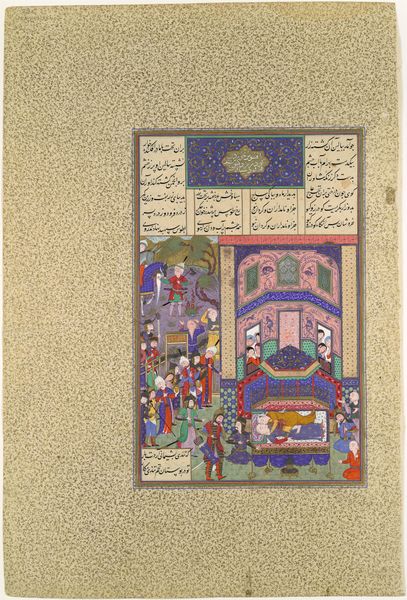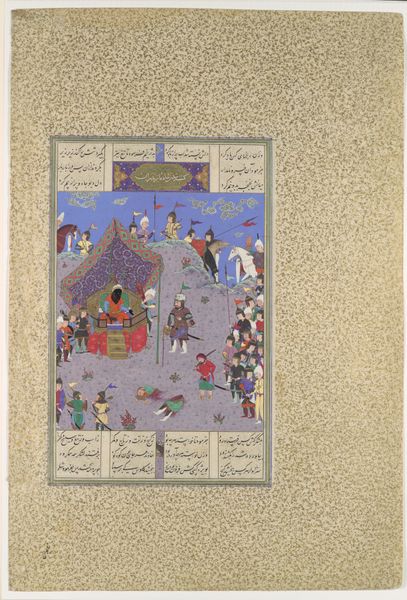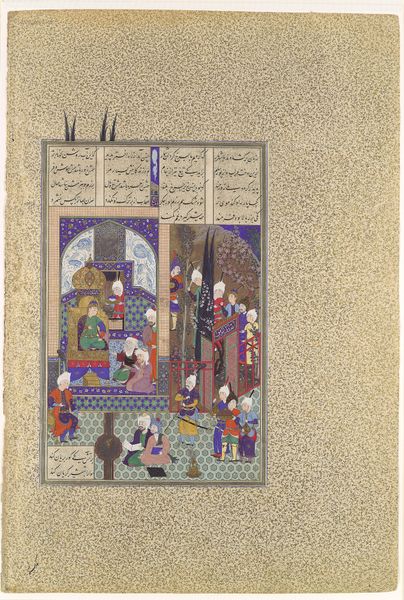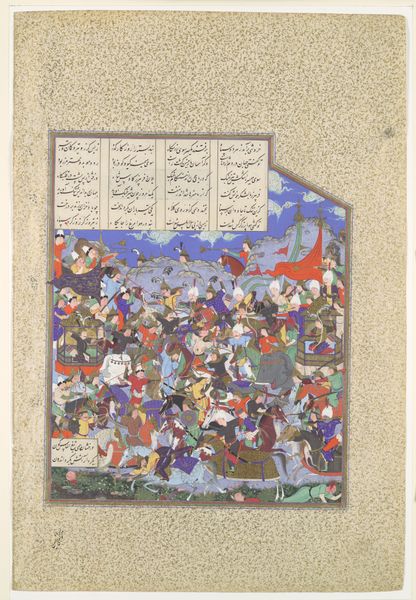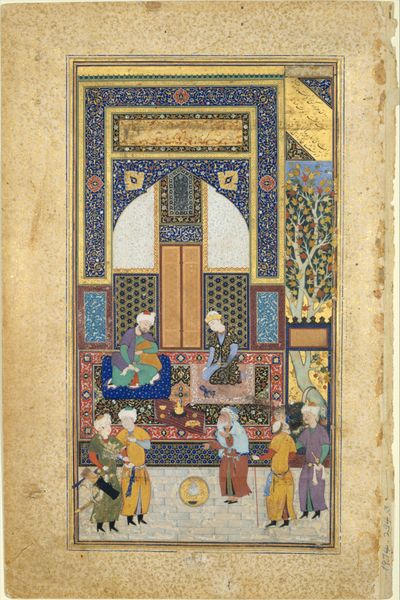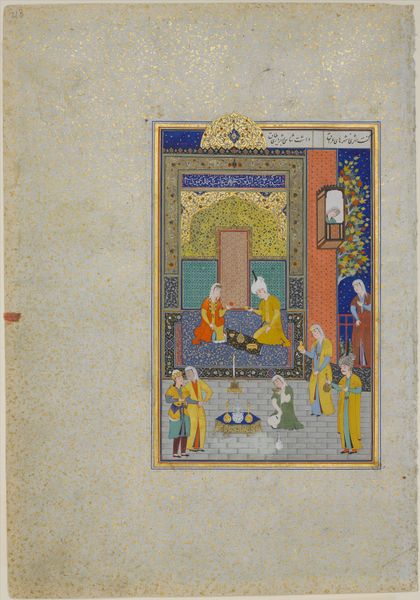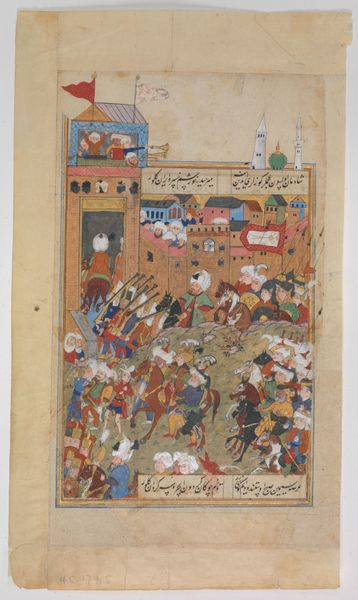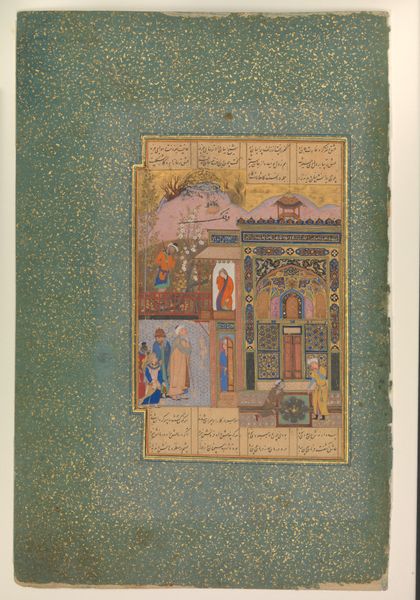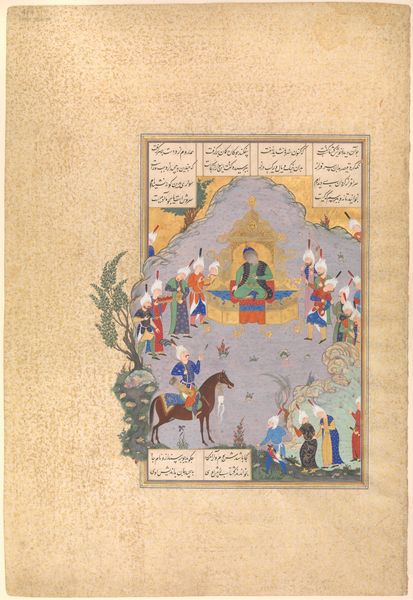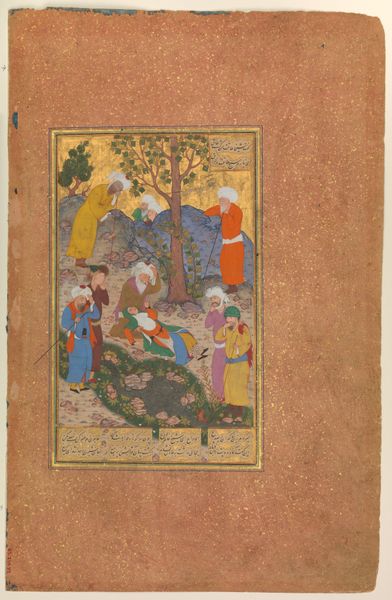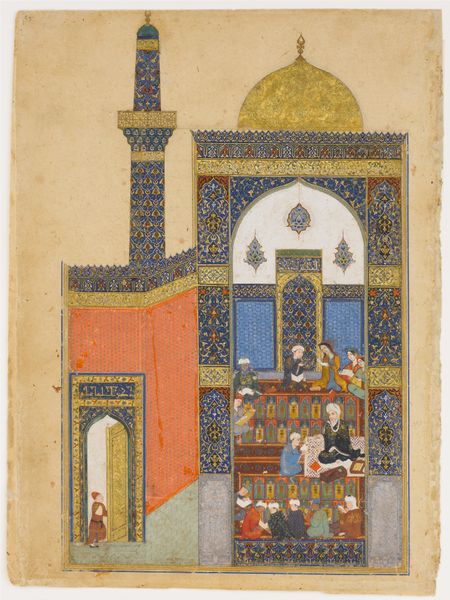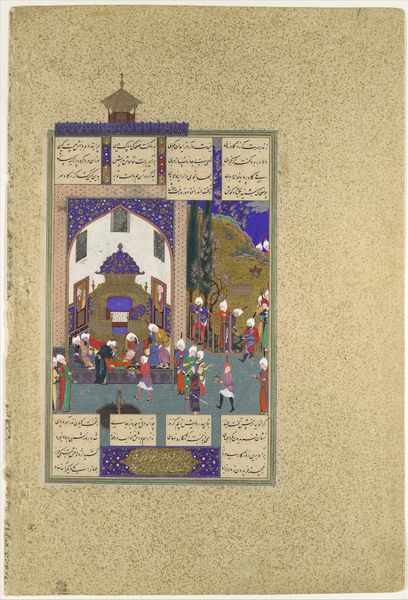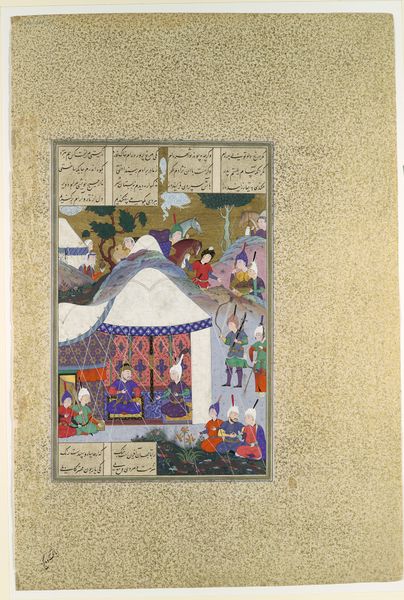
"Khusrau Seated on his Throne", Folio 64 from a Khamsa (Quintet) of Nizami of Ganja 1500 - 1550
0:00
0:00
painting, watercolor
#
narrative-art
#
painting
#
figuration
#
watercolor
#
islamic-art
#
miniature
Dimensions: Page: H. 12 5/8 in. (32.1 cm) W. 8 3/4 in. (22.2 cm) Mat: H. 19 1/4 in. (48.9 cm) W. 14 1/4 in. (36.2 cm)
Copyright: Public Domain
Curator: This painting, believed to have been created between 1500 and 1550, is Folio 64 from a Khamsa, or Quintet, of Nizami of Ganja, and depicts "Khusrau Seated on his Throne." It's currently held in the collection of the Metropolitan Museum of Art. Editor: My first impression is of incredible detail and vibrant color; the deep blues and reds against the gold background really make it pop, and the perspective feels almost flattened, creating a very decorative surface. Curator: Indeed. These paintings often functioned within the broader court culture, where the illustration of manuscripts served as an extension of royal power and a display of wealth and refinement. The fact that it is a manuscript illumination is relevant, especially with regards to its circulation and viewership. Editor: Focusing on the composition, look at how Khusrau is positioned. He is high above and centralized. It creates a clear hierarchy and allows us to appreciate the complex patterns and textures of the textiles, particularly the rug draped beneath his throne and the canopy overhead. How fascinating is the rendering of different textures in paint? Curator: Absolutely. The miniature reflects an idealized court setting but it also reflects social stratification; The elaborate setting emphasizes Khusrau's position. These details provide clues to how power was performed and perceived in that period. Editor: I also notice how each figure seems to have a unique pose and expression. Look at the subtle shading around the faces. The overall effect feels both formal and very human, an effect in Islamic art, if I am not mistaken. Curator: That’s very true. These paintings served didactic and representational purposes. I consider their meaning and function, as part of diplomatic gifts exchanged between rulers, or to embellish the libraries of nobles, and to assert their owners' authority and taste. Editor: Looking closer, there's almost a tension between the realism of the figures and the abstracted, almost ornamental background of trees and plants in the composition. A striking feature of Persian miniature painting is the way the spatial logic is collapsed. I appreciate it more after our dialogue. Curator: It's a valuable approach, as by studying works of art like this, it can show us ways that historical context allows us to analyze not only the imagery in the present, but it serves as a lens into the social history of Persian royalty during this particular historical context. Editor: Focusing solely on its visual design provides an enriching lens into understanding not only its unique compositional style but also how Persian miniature painting renders space in the composition.
Comments
No comments
Be the first to comment and join the conversation on the ultimate creative platform.
